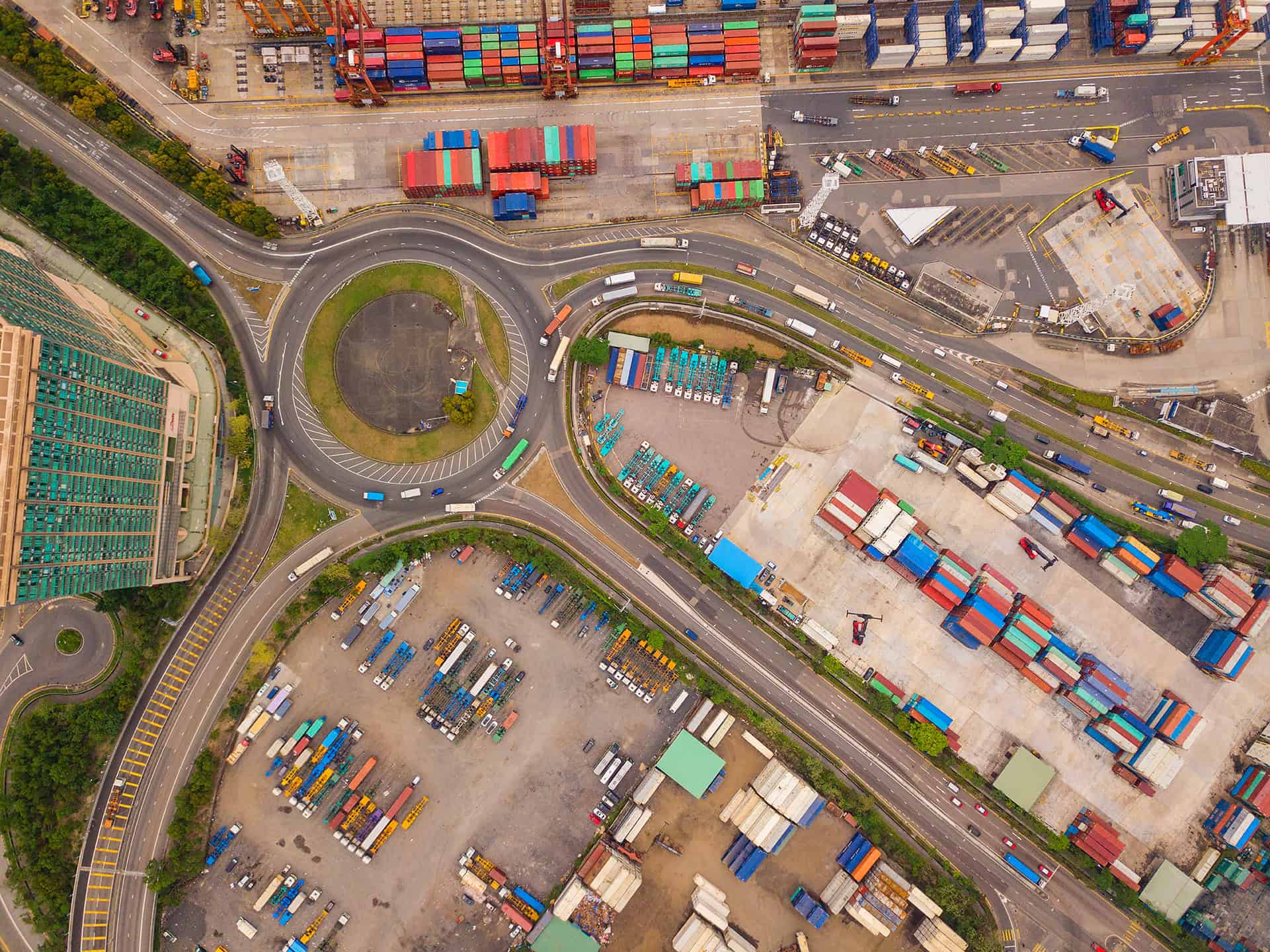
Supply chain disruptions have become a regular feature of our global business landscape. From the COVID-19 pandemic to climate-related disasters, and geopolitical tensions to port delays, organizations face an unprecedented array of challenges that test their ability to maintain operations and meet customer demands. The question is no longer whether disruptions will occur, but how effectively companies can respond when they do.
In a recent video interview with Adrian Gonzalez, Founder and President of Adelante SCM, and Gordon Fischer, Group Vice President of Product Management at e2open, we explored what the term “operational resilience” means within supply chains and what steps companies can take to achieve it.
Here are a few key takeaways from the conversation:
Q: Why has supply chain resilience become such a priority for companies?
A: The COVID-19 pandemic was a wake-up call, but it was not the only driver exposing vulnerabilities in global supply chains. In recent years, companies have faced a relentless series of disruptions beyond the pandemic, including changing trade laws, labor disputes such as port strikes, and the impacts of extreme events like hurricanes, wildfires, and droughts. Each of these events has highlighted the fragility of supply chains and the need for businesses to adapt quickly to maintain operations.
Q: What actions are companies taking to strengthen their supply chain resilience?
A: Companies are focusing on three main areas of supply chain resilience:
- Strengthening networks and connectivity: Improving connections with logistics providers, suppliers, and different parts of their organization
- Developing end-to-end visibility and alerting: Implementing systems to track shipments and identify potential issues early
- Adopting intelligent orchestration and resolution tools: Creating capabilities to bring together different parties quickly when problems arise
Q: What are the different types of supply chain resilience?
A: There are three main categories of supply chain resilience:
- Strategic Resilience: This involves long-term, high-level planning that requires significant investments and year-long preparation, such as multi-sourcing suppliers and relocating manufacturing facilities. It can include product engineering decisions.
- Tactical Resilience: This type of resilience operates at a mid-level planning horizon, encompassing scenario planning and inventory policies, with a focus on buffer stock and regional stockpiling decisions.
- Operational Resilience: This concentrates on rapid decision-making and coordinated actions across the ecosystem, with the primary goal of maintaining essential business operations while minimizing disruption impact.
Q: How does operational resilience work in practice?
A: Operational resilience manifests in several key areas of business operations:
1. Logistics-only Mitigation
Operational resilience comes to life when disruptions are identified early, and actionable solutions are quickly deployed. For example, if a shipment is delayed on the ocean, real-time visibility tools would alert the company. The system would then present options, such as expediting the road journey once the shipment reaches the port or rerouting the delivery via overnight air freight to ensure production lines keep running. By identifying the problem and offering viable logistical alternatives, the system enables businesses to minimize the impact of delays and maintain service levels, turning potential disruptions into manageable challenges.
2. Inventory Management
When dealing with stock transfers of finished goods within your supply chain network, the first thing you want to know is, “Where’s my stuff? Is it running late?” If it is delayed, the next step is to analyze the impact of inventory shortages and determine if there’s enough current stock to meet demand. If there isn’t sufficient inventory, decision-makers must then tackle the question of how to allocate and prioritize the limited supplies among customers. These situations commonly arise from disruptions such as port delays, supplier shortages, or unexpected spikes in demand.
3. Manufacturing Operations
Another common supply chain scenario where operational resilience applies involves manufacturing operations, where parts shortages can affect factory production runs. In these cases, managers might need to make strategic adjustments, such as changing manufacturing schedules or using alternative parts.
4. Project-Based Operations
The final scenario occurs in complex project-based industries, such as wind turbines, cell towers, or conducting offshore oil site repairs. These projects require precise coordination of specific “kits” of materials that must arrive together at remote locations. If one component is delayed, managers might slow down the delivery of other components to prevent them from sitting idle at remote sites.
Q: How are AI and automation being integrated into resilience strategies?
A: The evolution of AI in supply chain management is a bit like the adoption of spam email detection. When it was first implemented, people were skeptical and worried that they were missing out on important messages that were getting filtered out by spam. Today, we don’t think twice about it, and we trust technology because it works.
Something similar is happening for AI.
The current approach follows a “human-in-the-loop” pattern. AI systems suggest solutions or actions that a human then reviews and approves or declines, much like we used to double-check our spam folders. But as AI gets smarter, and we begin to trust its reliability and outcomes, the processes where humans consistently approve the recommendations will become candidates for full automation.
This evolution to full automation won’t happen overnight, though. When humans frequently need to override a system’s suggestion, it will trigger a review to see if the AI needs refinement, or if the human decision-making is wrong.
Q: What are the key benefits of investing in operational resilience?
A: While many supply chain professionals understand the importance of operational resilience, they often struggle with how to justify the investment to their leadership teams. However, the benefits of building a resilient supply chain extend far beyond simple risk mitigation. Let’s explore the three key advantages that make operational resilience not just a safeguard, but a strategic imperative for modern businesses.
1. Immediate Financial Impact
Investing in operational resilience helps minimize the financial impact of supply chain disruptions. When organizations can track and predict shipment arrivals more accurately through end-to-end visibility, they can make more informed decisions and cut down on the need for costly expedited shipping.
2. Competitive Advantage
Supply chains are evolving from cost centers to sources of competitive advantage. Organizations with strong operational resilience can respond more effectively to market changes and disruptions than their competitors. This enhanced agility leads to improved customer satisfaction, stronger brand loyalty, and increased market share.
3. Long-term Efficiency
Regular practice and systemization of resilience procedures create long-lasting organizational improvements. Companies develop institutional knowledge about handling different types of disruptions, making each subsequent challenge easier to address. The accumulated experience extends to strategic decisions, such as understanding which partners excel at different stages of product development and how to optimize new product introduction. The result – improved efficiency, better preparedness, and sustained cost savings over time.
Q: How should companies get started with improving their operational resilience?
A: Every journey toward improved operational resilience begins with clear direction and purpose. Here are a few practical tips for companies looking to enhance their supply chain resilience:
1. Start with a Clear Vision
The first step is establishing operational resilience as a strategic asset within your organization. While the importance of supply chain resilience has become increasingly evident in recent years, it’s crucial to secure buy-in from key influencers in your company. Your vision should align with broader business objectives and demonstrate how enhanced resilience contributes to competitive advantage.
2. Begin with Target Use Cases
Rather than attempting a complete transformation all at once, identify specific use cases that can deliver immediate return on investment. For many companies, a common starting point is addressing inbound logistics visibility. Problems like not knowing where shipments are located often lead to costly expedited shipping, inefficient dock space usage, and inventory uncertainties. By targeting one specific challenge, companies can demonstrate quick wins and build momentum for broader initiatives.
3. Adopt a Continuous Learning Mindset
Organizations must develop a systematic approach to capturing and applying lessons learned from disruptions. Even within limited spheres of control, valuable insights can emerge. For example, a logistics team without direct access to inventory data can still track patterns in inbound and outbound shipments to identify potential issues or opportunities. The key is creating feedback loops that enable the organization to continuously improve its response to disruptions.
4. Consider Your Scope of Control
When implementing resilience initiatives, consider your organizational boundaries. If you oversee both supply chain and logistics, you might have the ability to link supply chain data with current inventory levels. If your control is limited to logistics, focus on optimizing what’s within your domain while building bridges to share insights with other departments. Remember that valuable improvements can be made at any level – the important thing is starting somewhere and demonstrating value.
Building long-term success
The past few years have demonstrated that supply chain disruptions can arise from anywhere – a pandemic shutting down global trade, a container ship blocking the Suez Canal, geopolitical tensions affecting manufacturing regions, or extreme weather events disrupting transportation routes. These events have shown that traditional risk management approaches are no longer sufficient. Organizations need operational resilience built into their DNA.
Companies that invest in operational resilience are better positioned to:
- Respond quickly to disruptions and maintain business continuity
- Protect revenue and market share during crisis periods
- Build stronger relationships with suppliers and customers
- Create competitive advantages through superior supply chain performance
- Reduce costs associated with expedited shipping and emergency measures
- Meet evolving customer expectations for reliability and transparency
As supply chains become increasingly complex and interconnected, the importance of operational resilience will only grow. The companies that succeed in the future will be those that make resilience a strategic priority today, investing in the technology, processes, and people needed to navigate an uncertain business landscape.
If you are interested in learning more about how operational resilience could benefit your company, please contact us!




